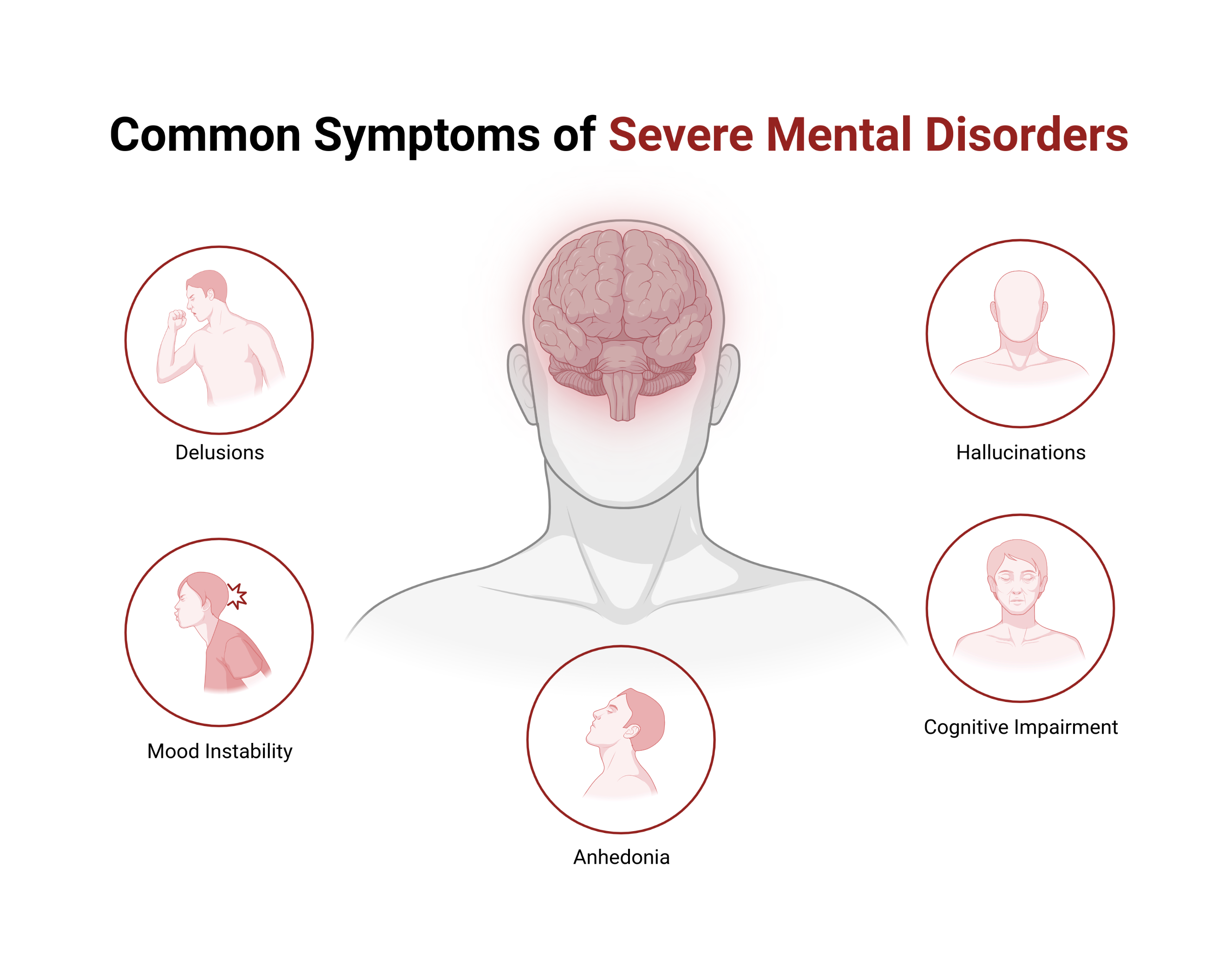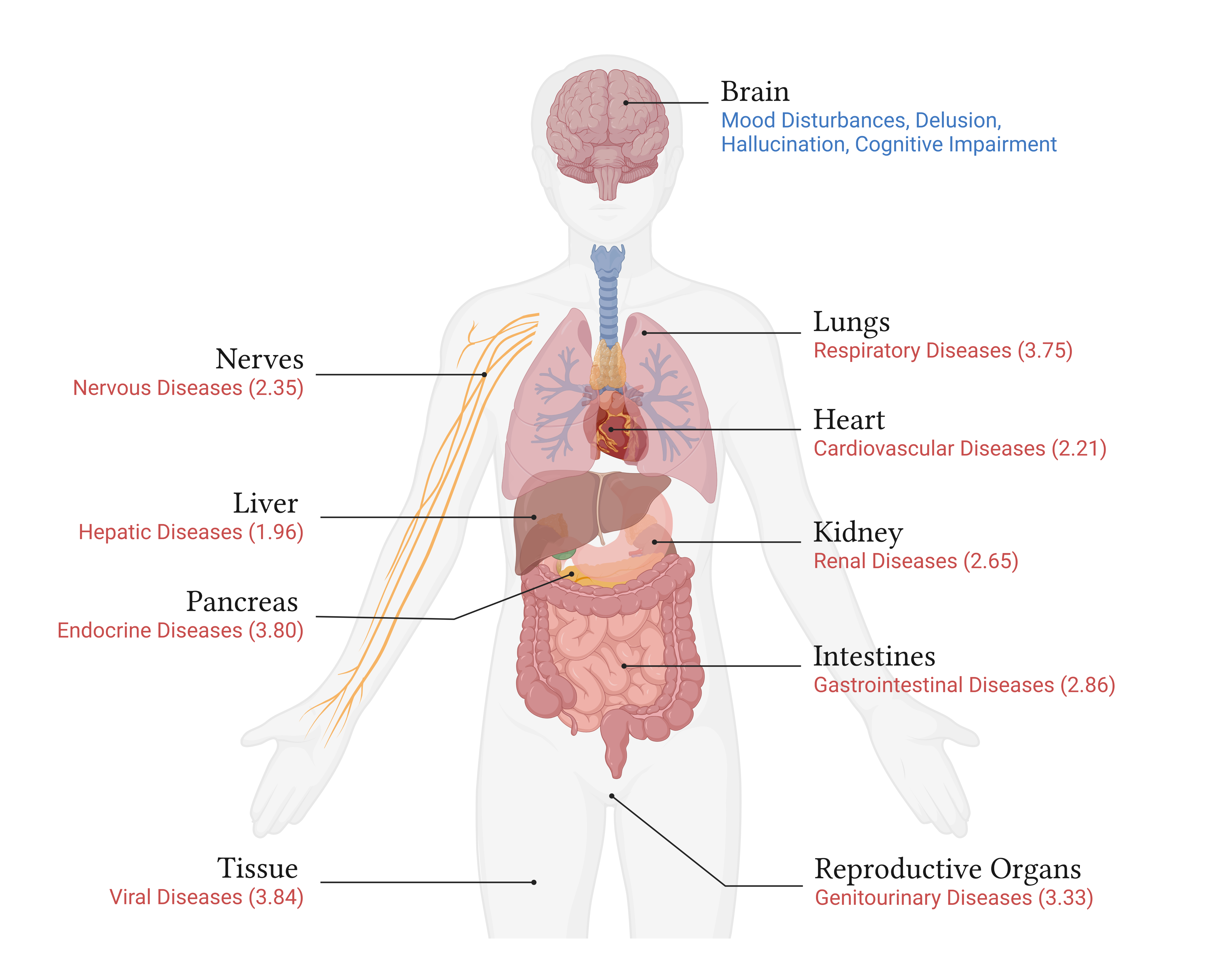Introducing Severe Mental Disorders
Welcome to my blog! This summer, I am embarking on an exciting outreach adventure by sharing my PhD research with you. Each week, I will release a new blog post where I unpack a specific aspect of my scientific work. The best part? I will be presenting the information in bite-sized, easily understandable chunks of text! So, whether you are a fellow academic, a curious mind, or simply looking to expand your knowledge, this blog is here to serve you. Throughout the text and in each image you can find links to more detailed sources of information for the topics I discuss here. This week, our focus lies on introducing severe mental disorders such as schizophrenia and bipolar disorder. Let's get started!

Each of our minds is the complex biological outcome of every sensation that has ever run through our bodies, the product of all the ways we have ever been loved or disappointed, the aggregate of each time we have been hurt or celebrated. To adapt to the changing circumstances and various experiences of life, our brains reorganise themselves around underlying genetic and epigenetic scaffolds. In health, this extraordinary mental flexibility – a hallmark of human resilience – provides us with a wide playing field, but in disease we find ourselves traversing a narrow path: precariously balancing our own needs with those induced by a pathogen, dangerous genetic mutation, or misplaced methyl tag. If that path becomes unbearably narrow and our internal balance impossible to maintain, we stray beyond the regular human experience and into the poorly understood realms of psychiatric disorder.

Mental disorders involve significant disruptions in a person's behavior, cognitive abilities, daily functioning, and emotional regulation. While effective prevention and treatment options exist for milder mental disorders, access to quality and affordable care is often limited for patients. Unfortunately, those who suffer from severe mental disorders like schizophrenia and bipolar disorder effective curative or preventive treatments often don't exist. Despite years of research, individuals with severe mental health disorders experience a reduced life expectancy of around 10 to 15 years, partly due to limitations in current medical practices and the severity of symptoms. Additionally, stigma, discrimination, and human rights violations against individuals with mental disorders, whether severe or not, remain widespread and deeply troubling.

Furthermore, patients with these mental disorders are more susceptible to other illnesses such as cardiovascular and endocrine diseases. Schizophrenia and bipolar disorder exhibit a combination of positive symptoms (hallucinations, delusions, mania), negative symptoms (depression, anhedonia), and cognitive impairments. Schizophrenia primarily involves psychotic symptoms like hallucinations and delusions, while bipolar disorder is primarily diagnosed as a mood disorder characterized by alternating episodes of mania and depression. Patients experiencing both psychosis and fluctuating mood disturbances are often diagnosed with schizoaffective disorder. However, due to the complex nature of these disorders, individuals diagnosed with the same mental disorder may not share similar clinical symptoms, and overlapping symptoms may originate from different disorders.
The content of this blog post reflects my personal opinions and insights and should not be attributed to my employer or investors. The information provided in this post is for educational purposes only and should not be construed as medical advice. It is crucial to consult with medical professionals for any mental or physical healthcare concerns. All images featured in this blog post were created using Biorender.com under an academic license. These blog posts are derived from excerpts of my PhD thesis, based on research conducted at the University of Oslo, which you can also read on this website.
